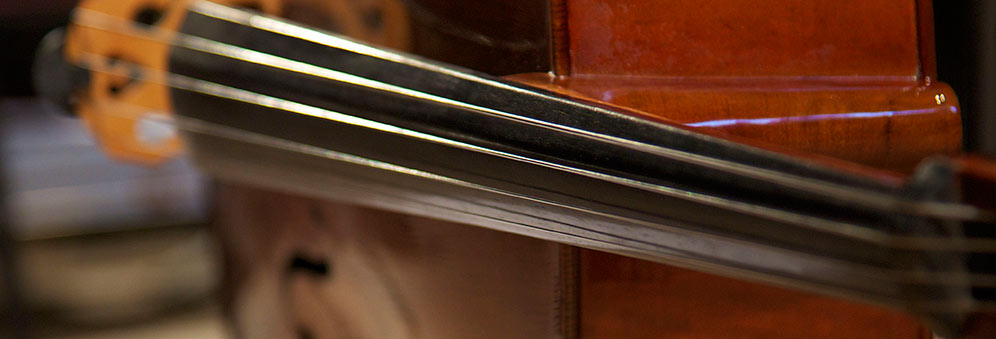Inspiring mathematicians
Researchers are bringing maths to life by telling the human stories behind important breakthroughs, and using music to illustrate complex mathematical problems.
“I wanted to show the human side of the work. I wanted to show that maths can be exciting, that there are lots of problems out there that still need solving and that being a mathematician can be interesting and rewarding.” - Dr Nina Snaith, School of Mathematics
Making mathematics sound exciting and interesting can sometimes be a challenge, particularly when the theory behind the mathematics is complex. Researchers at Bristol are using a variety of public engagement activities to inspire people of all ages about the beauty and fascination of mathematics. These range from Dr Nina Snaith’s lectures on random matrix theory across the UK to an installation that explains quantum graphs.
Using stories to inspire audiences from school children to fellow academics
Snaith’s lectures tell the personal story behind an important advance in number theory made by Snaith and her colleague Professor Jon Keating. The Riemann Hypothesis is a longstanding mathematical problem about the distribution of prime numbers. For over 150 years, mathematicians have tried, and failed, to prove it. This hypothesis is so challenging that a US mathematics institute is offering a $1 million prize to anyone who can prove it.
While Snaith and Keating were not working on proving the Riemann Hypothesis, they were working on problems relating to it. They found that a technique used in physics – random matrix theory – could be used to calculate a particular sequence of numbers which until then pure number theorists had been struggling to calculate.
Random matrix theory was developed in the 1950s and used by physicists to model the excitation states of atomic nuclei - pure mathematicians found it very hard to believe that it could be used in number theory. Snaith’s lectures relate how eminent mathematicians challenged Keating to prove that random matrix theory could be used for this purpose and how he and Snaith did finally prove it. “I wanted to show the human side of the work,” says Snaith. “I wanted to show that maths can be exciting, that there are lots of problems out there that still need solving and that being a mathematician can be interesting and rewarding.” The very positive feedback from school children to fellow mathematicians shows just how widely she’s achieved this.
The music of quantum
Another activity that has inspired numerous people whether they are academics or not, is an exhibit designed for the Royal Society Summer Exhibition. This demonstrates the theory behind quantum graphs, based on work led by mathematician Dr Ram Band.
Over several decades mathematicians and physicists at Bristol have contributed significantly to the field of quantum chaos: the study of quantum properties of systems that classically display chaos. The two subjects are closely connected and ideas from random matrix theory underpin the area of quantum chaos.
“Everyone understands that plucking strings of different lengths gives different sounds,” explains Pete Shadbolt, one of the joint team from the Schools of Mathematics and Physics involved. “But what happens if these strings are tied together in a web? Can you listen to the sound and tell the structure of this web?”
This quantum graph theory is important for many different fields of science. For example it can be used in chemistry to work out shapes of molecules, or in ultrasound engineering to work out human physiology. To bring these ideas to life, the team developed an interactive touchtable that enabled users to create their own graphs and listen to the sound they would make. It proved to be anarchic fun for young children, interesting and accessible for secondary school students, yet challenging and surprising to academics. This range of positive responses came from the thousands of visitors to the Exhibition, as well as the extensive press coverage and numerous visits to the Royal Society’s website.
Prize-winning TV
The work of Bristol mathematicians has also been featured in a prize-winning TV documentary. Professors Brian Conrey and Jon Keating, with physicist Professor Sir Michael Berry, were interviewed about their research on random matrix theory and number theory for a Japanese TV documentary. This was subsequently dubbed into English as “The Cosmic Code Breakers” and won awards in France, China, Japan and Canada as well as being syndicated by American Public Television.

